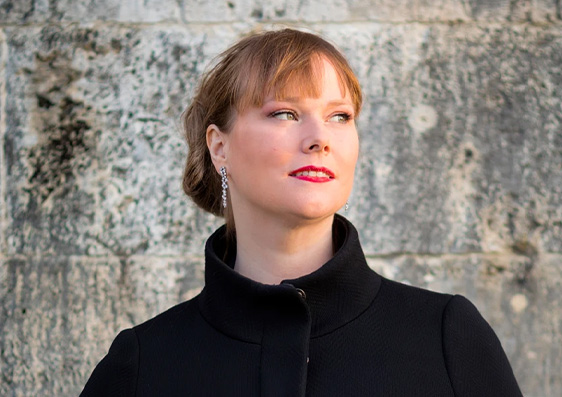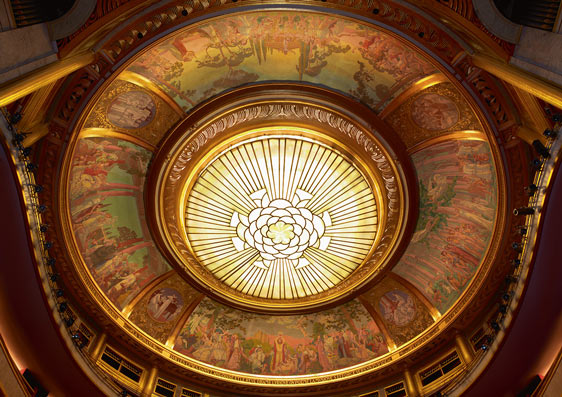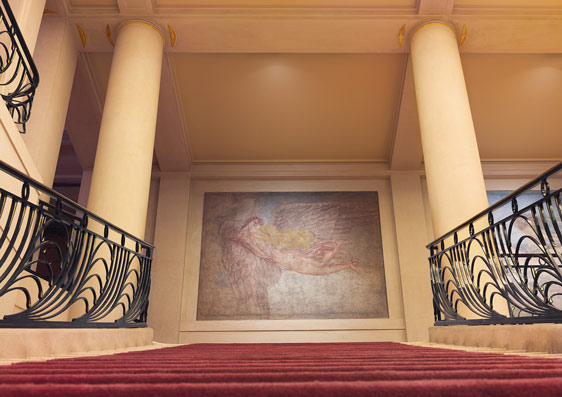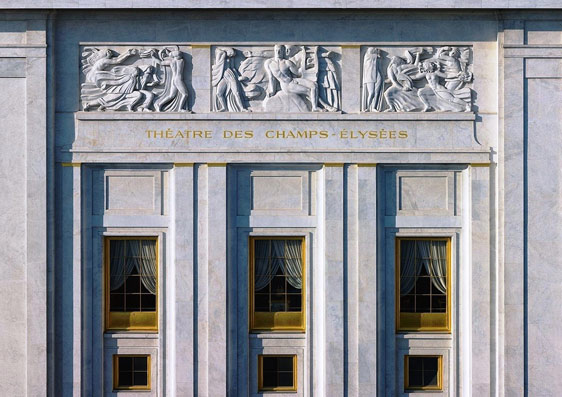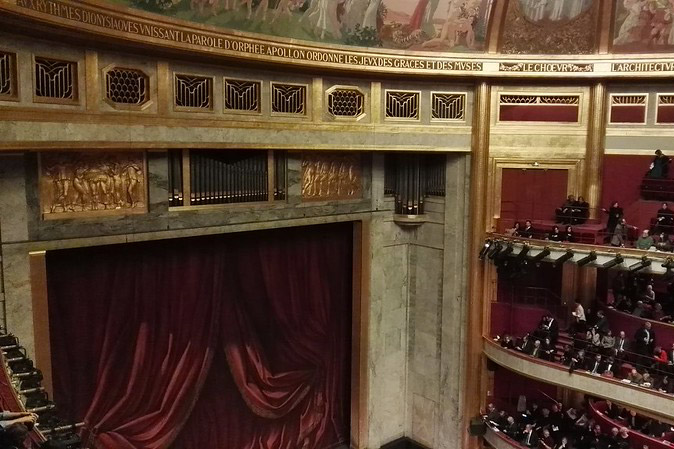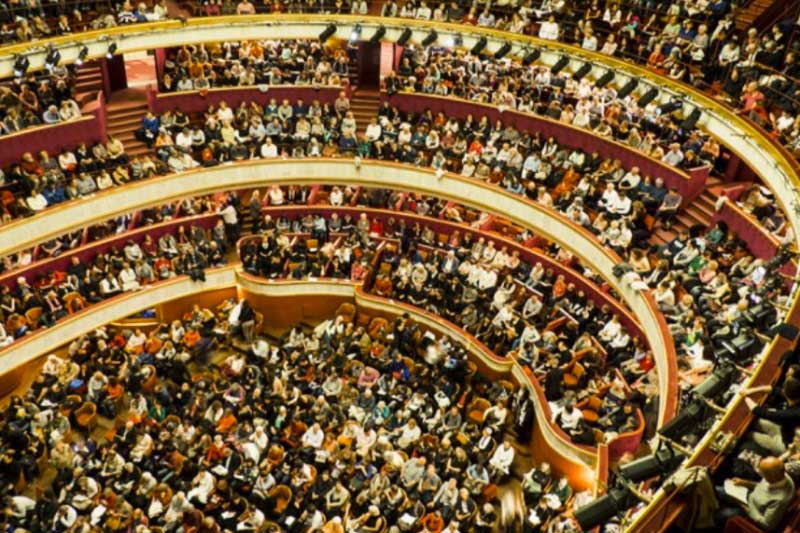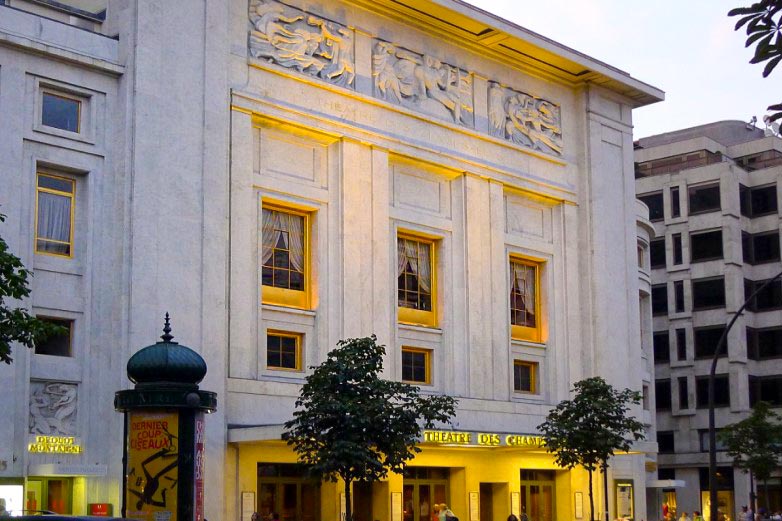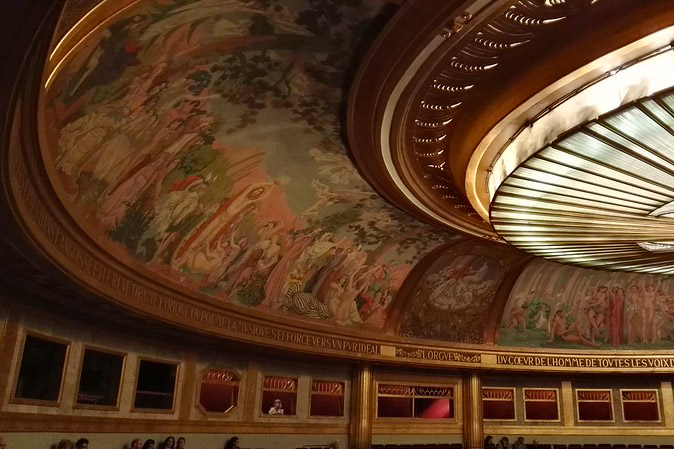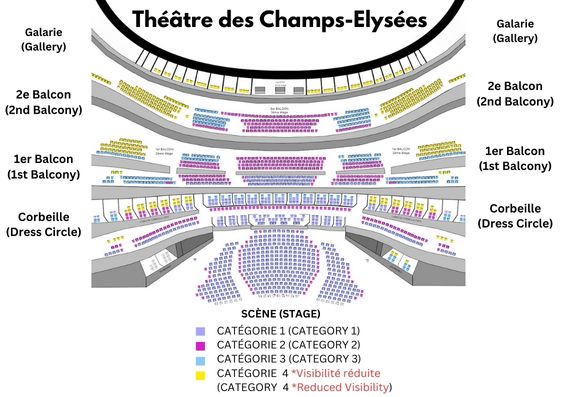Mozart's Die Entführung aus dem Serail

From 06/06 to 12/06/2026
Location
15 avenue Montaigne, 75008 Paris
Capacity 1905 seats
Duration
2 h 30 min
With intermission
Details
Opera
For all audiences
In German with French and English surtitles
Highlights: Die Entführung aus dem Serail
Story: Die Entführung aus dem Serail
Reviews
Théâtre des Champs-Élysées
History and Fun Facts about the Théâtre des Champs-Élysées
Hosting one of the most lavishing concert halls in all of Paris, Champs- Élysées is the true definition of architectural beauty with its historic foundation. Inaugurated on April 2nd, 1913, the structure is quite large comprising three auditoriums: Théâtre des Champs- Élysées, The Comédie des Champs- Élysées, Studio des Champs- Élysées, and a restaurant. The main theatre which has 1905 seats is Italian styled and originally constructed to host guests visiting the theatre to watch opera shows and concerts. This was the first theatre in Paris to be built completely from reinforced concrete instead of steel.
Over the years the famed theatre has hosted many recognized artists such as the beautiful cabaret dancer Josephine Baker, Louis Armstrong, Ella Fitzgerald, Oscar Peterson, Stravinsky, Richard Strauss, and many other entertainers from our cherished olden day era. In 2005 the main room in the theatre was renovated in order to improve the acoustics, it is confirmed that during a show the sounds are very clear, almost as if you were up close to the stage. Théâtre des Champs- Élysées is one of the most frequently visited monuments in Paris, on an annual basis more than 300,000 people attend programs from contemporary dance and ballet recitals to orchestras, operas, and other concerts. Carrying a number of diverse performances of different genres, the theatre attracts audience members of all ages.
Fast facts Capacity: 1,905 Handicap Accessible: Yes Air conditioning: No Heating: Yes Coat Check: Yes (paid service)
FAQ
How do I get to Théâtre des Champs-Élysées in the 8th arrondissement of Paris?
The Théâtre des Champs-Élysées is accessible by:
Metro: Line 1 (station Franklin D. Roosevelt), line 9 (station Franklin D. Roosevelt and Alma Marceau)
RER: Line C (station Pont de l’Alma)
Address: 15 avenue Montaigne, 75008 Paris
In case of difficulty, our hotline can be reached during our business hours. Please see the footer of this page for our contact details.
What do I do when I get to Théâtre des Champs-Élysées?
We invite you to arrive 20 minutes before the beginning of Die Entführung aus dem Serail at Théâtre des Champs-Élysées, and present your voucher at the front desk. Théâtre des Champs-Élysées’s English-speaking staff members will guide you to your seats.
The auditorium doors close as soon as the performance begins. The first latecomers are placed in late boxes with a limited number of seats.
Those who arrive later will have to wait for the interval (if there is one), watching the broadcast of the performance on screens located around the perimeter of the Orchestra, in order to get back to their seats.
How long does Die Entführung aus dem Serail at Théâtre des Champs-Élysées last?
Die Entführung aus dem Serail at Théâtre des Champs-Élysées lasts approximately 2 hours and 30 minutes, with intermission.
Is Die Entführung aus dem Serail for an international audience or French speakers?
For both! The Théâtre des Champs-Élysées has been welcoming audiences from all over the world for 30 years. Die Entführung aus dem Serail, is sung in its original German version. Surtitles are provided in both French and English so that international audiences can appreciate this opera in this incredible Parisian venue.
Where will I be seated, and will I see the surtitles* properly?
At Théâtre des Champs-Élysées, there are a maximum of four categories available for Die Entführung aus dem Serail. The Théâtre des Champs-Élysées has an Italian-style auditorium, i.e. in the shape of a horseshoe. The surtitles are projected on both sides of the stage. Seats in categories 1, 2 and 3 give a good view of the stage and the surtitles. Category 4, on the other hand, offers reduced visibility.
You can find the seating plan in the theatre’s "photo" section on this page.
*Surtitles (also called supertitles) are the theatre equivalent of subtitles. That’s because in French “sur” means “above”. At Théâtre des Champs-Élysées, the text is projected on the sides of the auditorium.
Can I choose my seat when booking?
When purchasing tickets, choose your preferred category and you will be allocated the best available seats in that category!
Please note that tickets of the same category that are booked during the same purchase session, in the same booking order on our website are always assigned side by side. To be sure of this, make sure all of your tickets are in the same category and are included in your shopping cart at the time of purchase.
You can find the seating plan in the theatre’s "photo" section on this page.
If there are no available adjacent seating arrangements, our customer service team will contact you before the booking is confirmed.
Is there a dress code at Théâtre des Champs-Élysées?
There is no specific dress code at Théâtre des Champs-Élysées, but proper attire is appreciated. Many Parisians will arrive directly from work, dressed in business casual or chic attire.




